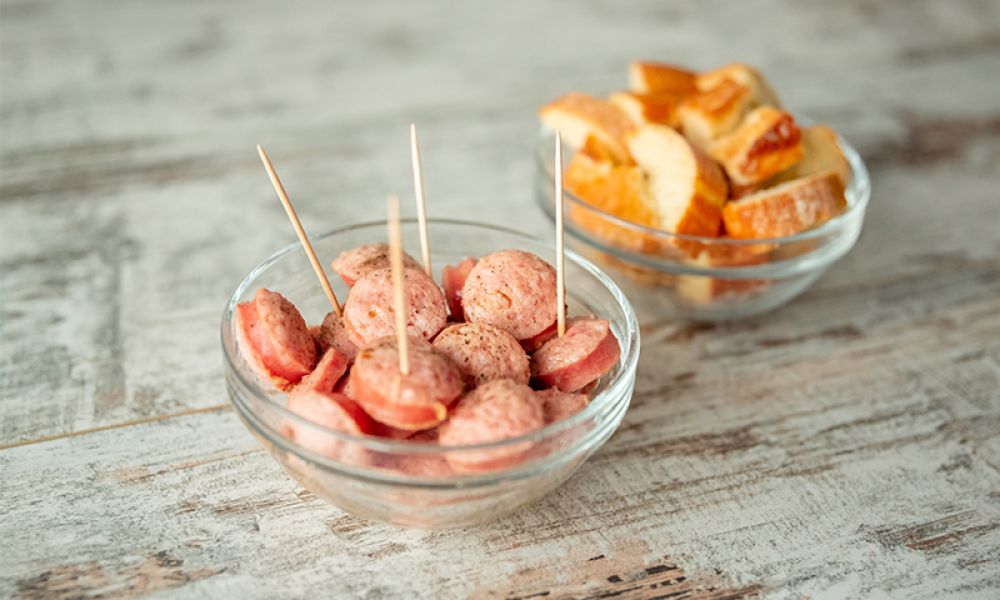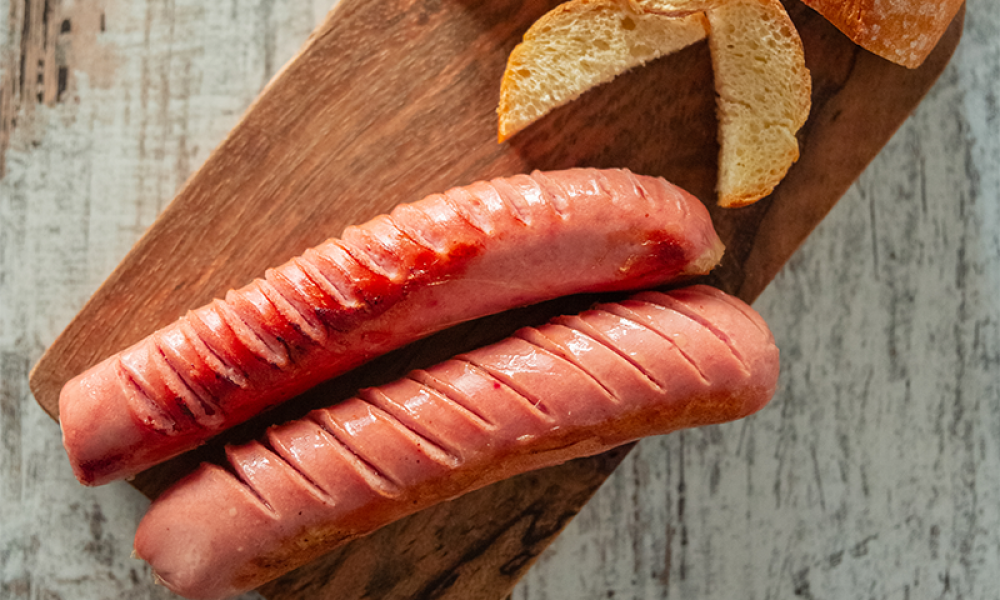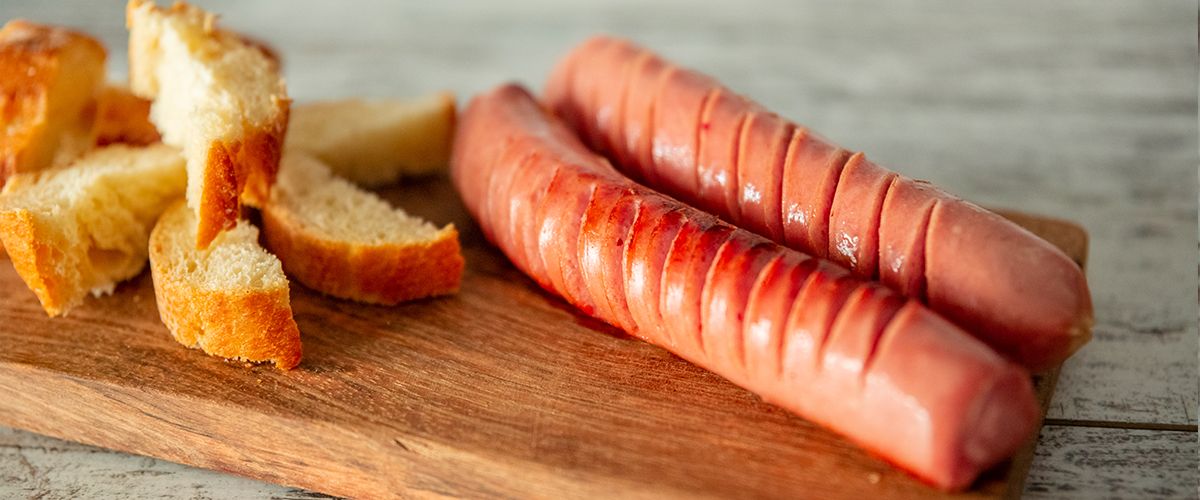Hot dogs, appetizers, pot pies and finger food: wurstel are the perfect ally in cooking, especially when you have little time. Forget the standard products that are available on the markets and get ready to taste the artisan Vienna sausage that have become even more trendy. They are made with high-quality ingredients and with the finest cuts of meat by the Italian cured-meats-factories. Have a look at the following guide: we will tell you what a good artisan Vienna sausage is made of and how it is produced. So, let’s prepare your pan to cook them! You will get one of the foods most loved by anyone, especially by children, on the table: only curious people are allowed!
What are Vienna sausages?
By definition, Vienna sausages are sort of thin parboiled sausages that contain a lot of water and are traditionally made of pork, beef or horse meat. This food product comes from Germany and it is typical in the northern countries of Europe. It is considered a type of sausage especially in Italy, where it has taken its own personality in particular in the methods of production. In Italy, now, the artisan Vienna sausages, also known as wurstel, are promoted in the market as a real traditional sausage thanks to the raw material foods.
The word “wurstel” has German origins and in English can be translated as “sausages”: northern countries of Europe eat a lot of them and they distinguish two kind of wurstel: the Wiener würstchen and Frankfurter würstchen (or Frankfurter sausage). In the States these varieties of sausages are called hot dogs, seasoned with mustard, ketchup and any kind of sauce. The difference between the Vienna and Frankfurter wurstel lies in the ingredients and shapes: the first one is shorter and is made of swine or bovine meats; the second one is longer and made of only swine meat. Over time, also Italians have started to produce artisan wurstel imitating the Austrian or German traditional gastronomy. Vienna sausages are the most common street food, that together with beer and sauerkraut, are protagonists down the streets of Austrian and German cities.
In spite of the opinion of many, that think that Vienna sausages are an industrial unhealthy products, the current trend is to make high-quality sausages. Our salumificio Santoro specializes in making artisan quality Apulian salumi, that can also be bought in our e-shop. We have created the artisan Vienna sausages: healthy, good and made of the high-quality ingredients of our territory. Let’s see how it is made, how it is produced and how you can eat them.

Production and ingredients: what are the Vienna sausages made of?
For its production and processing, the Vienna sausages require swine, bovine or equine meat, to which are added some ice, hard pork fat and seasonings like pepper, paprika and additives, permitted by law. The success of the final food product depends on the right balance between flavours and the quantity of the cuts of meat. The finest and high-quality wurstel need a percentage of 40-50% of pork, 20-30% of ice and 20-30% of fat. With chicken or turkey wurstel, the percentage can change depending also on the seasonings like sauces and cheese. Cheaper Vienna sausages are made with less fine cuts of meat and then processed with an accurate method of production.
The method of making wurstel is very important to define the quality-features of the products. In general, high-quality wurstel, produced with the finest cuts of meat don’t need lots of treatments. However there are some common stages that are useful to the Vienna sausages production. Let’s have a look:
- The choice of the raw materials and the ingredients to make Vienna sausages, the preparation of the cuts of meat and the storage at low temperature
- The processing of the meats in specific machines in a predetermined order: cuts of meat, rind or fat, ice, seasonings and additives
- The creation of a homogeneous product
- The stuffing in a casing of natural or synthetic casing, depending on the quality of the sausages.
- The cooking and the smoking of Vienna sausages in a oven with beech wood.
- After cooking them, Vienna sausages are sprayed with water and left to rest for at least 12 hours in our cellars at 2°C
- The peeling and the removing of the casing
- The packaging in vacuum bags, exactly as we find them on the markets
- After the packaging, sometimes, there is the pasteurization that is a process in which certain wurstel vacuum packages are treated with mid heat, to extend shelf life also at higher than 0-4°C temperature.
The ingredients of Italian wurstel
In Italy the Vienna sausages production is spread also to the artisan cured meat factories, that have brought to the market high finest quality product, they are made with fresh and not mechanically separated meat that are chosen one-by-one with the same attention involved in the making of the local artisan salumi. When the final product is handmade, it becomes leaner and is suitable also to be consumed by children and pregnant women. It is recommended to cook them before eating. For example, the artisan prefers the use of a natural intestine and of the beech wood in the smoking step, while industrial wurstel are smoked with a liquid smoke. On balance, artisan Vienna sausages, made of prime cuts of meat, are like real steak but with a different shape. Our tip to choose the best wurstel is to pay attention to the label. You must check the origin and the type of raw materials that have been used. If the label indicates the type of the meat used and you read “ swine/bovine meat” you can be sure: that the sausages are made with meat and minced meat, exactly like the best Bavarian wurstel.
If you read on the label “mechanically separated meat” or simply MSM, it means it is a low quality product, obtained with meat waste or low-quality meat cuts. Remember that when the casing is natural you mustn’t peel it off! Pay attention to the price, because it is a quality index: chose carefully the wurstel you eat!
How can you understand if the Vienna sausages you bought are a high-quality product?
Beyond the label reading, the secret to understand if a Vienna sausage is good is in the cooking. If you are not sure about the vacuum salumi, organize a tasting or look at the wurstel during the cooking. If they tend to reduce while cooking in the pan or on the grill, it means that the product is not made with prime cuts of meat. Remember that the real Vienna sausages, according to the German gastronomic tradition, are made of a mix of high-quality lean and fatty meat. Then salt, pepper and various spices are added to the mix, and all is after stuffed into a pork or lamb intestine casing. The wurstel made of wastes of mechanically separated meat has nothing to do with the artisan wurstel!
The artisan wurstel made by Salumifio Santoro
Salumificio Santoro is an artisan cured-meats factory, 100% made in Apulia, that produces –beyond the famous Capocollo of Martin Franca- also the Vienna sausages made of local pork meat: in particular, to create the artisan wurstel, sold also in our e-shop, only lean meats of swine raised of the regional supply chain with a very law percentage of fat are used. The swine parts used are the pork shoulder and leg, so, no waste parts are used in the producing and processing of the wurstel. We recommend eating them slightly overdone or maybe grilled.
The Santoro artisan Vienna sausage, aromatized with salt, pepper and natural spices, have very little in common with the industrial ones. They are simply a very good cooked sausage made only with noble cuts of meat, seasoned with natural ingredients.

What is the difference between an Apulia wurstel and a common Vienna sausage?
The Apulian artisan wurstel is made exclusively of meat cuts from the local pigs selected among the best ones of the Murgia. The swines here are grown in a semi-wild state, free to graze between woods and fields, without forcing the growth process nor manipulating their natural nourishment, based on Mediterranean maquis typical products. The Apulian swines eat especially corn, barley, grain, field beans and acorns belonging to the famous Fragno, a trans-Adriatic oak present almost exclusively in Valle d’Itria.
Thanks to this kind of nourishment the Apulian swine is unique worldwide and is different from any other kind of swine that grows on Italian soil. The Apulian swine was born by crossing three breeds: the Large White, the Landrace and the Duroc.
How to eat Vienna sausage
The artisan Vienna sausage are one of the best ally in cooking, thanks to the fact they are already boiled or smoked. They require a very little cooking time and are perfect to be prepared boiled in a pan or roasted at a low temperature. Many people create appetizers, finger food, savoury cakes, puff pastry pot pies, side dishes, perhaps combined with other salumi, like pancetta or bacon, Panini, hot dogs with sauces (like raw ketchup, mustard or mayonnaise) or chips. You can also prepare currywurst, the typical Berliner street food, with Vienna sausages combined with spicy tomato sauce and a lot of curry. There also other recipes like the wurstel with sauerkraut or the rice salad.
Vienna sausages are better raw or cooked?
Vacuum packed wurstel are always already cooked before being available on the market. Eating them raw, however, is not recommended. It is really dangerous for your health especially if they are Vienna sausages of industrial production. To eat wurstel without endangering your health, you need to boil or roast them in a pan and cook them slightly, avoiding cooking them too much. Are you ready to taste them?
